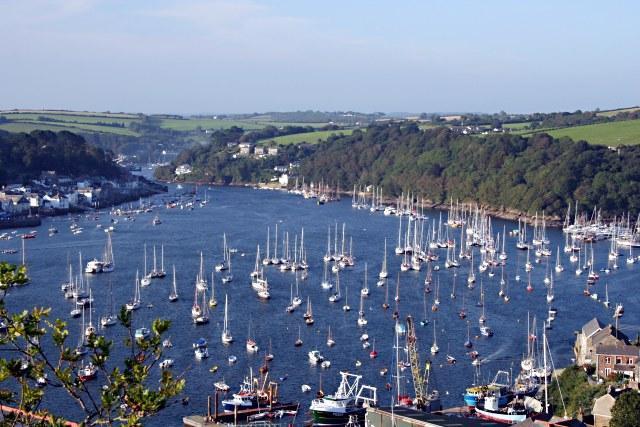Undoing Beeching: six suitable candidates for restored rail links
The Government has invited nominations for railway lines closed in the 1960s to re-open. Our travel correspondent responds

For the past half-century in villages, towns and cities the length and breadth of Britain, Dr Richard Beeching has been blamed for dismantling the nation’s railways. With The Reshaping of British Railways, the doctor ordered thousands of miles of track to be ripped up and hundreds of stations to be closed, leaving today’s network a skeleton of its former self.
While the chairman of the British Railways Board used some very narrow cost-benefit analysis to deem lines uneconomic, it was governments of both main parties that wielded the Beeching axe. Since then, communities across the UK have advanced some convincing arguments for reopening sections closed in the countrywide cull. So for the Department for Transport suddenly to appeal for nominations for “railway rescue” rings hollow. But in the hope that money and momentum may soon be found to re-connect the nation, six lines look ripe for reincarnation.
Carlisle-Tweedbank
The line between Carlisle and Edinburgh along the Waverley Route cuts through some spectacular countryside and remote settlements. Its closure in 1969 left the Borders as the only region of Britain without a rail service.
In the single most successful reverse of Beeching so far, two years ago the line from the Scottish capital as far as Tweedbank – about 35 miles away – reopened on 6 September 2015 as the Borders Railway.
Poor planning of the £300m project, in particular underestimating passenger demand, cutting back on double tracking and inadequate rolling stock, led to widespread delays and cancellations in the first year. But the line is now an essential part of the region’s infrastructure, and the case for extending it south to Carlisle looks solid. It would reopen the most direct route between London and Edinburgh, remove the absurd need for England-bound passengers from Galashiels to head north before they go south, and spur more tourism to a scenic and historic part of Scotland that welcomes far fewer visitors than it should.
Likelihood: 7/10
Carmarthen-Aberystwyth
Wales has a sad claim to fame: the highest concentration of “heritage railways” in the world. Some of these enthusiast-run lines fulfil an important role in connecting the nation, such as the Ffestiniog Mountain Railway through Snowdonia. But elsewhere the Beeching cuts have made journeys between locations in west Wales extremely protracted: if you miss the 1.55pm departure from Swansea to Pwllheli, for example, you cannot reach the resort on the same day. A restored line would better than halve the seven-hour journey time. And, from an aesthetic perspective, this restored line would be a valuable addition to the country’s portfolio of great railway journeys.
Likelihood: 3/10
Malton-Pickering
The North Yorkshire Moors Railway is arguably the most successful in England, connecting Pickering with the fine port of Whitby. Pickering is a hub for rail enthusiasts, yet many arrive by car or bus. There has been no link to the rest of the rail network for half a century. A short stretch of re-laid track would reach the York-Scarborough line at Rillington, close to Malton, and make the coast and national park much more accessible.
Likelihood: 4/10
Rugby-Leicester
Dr Beeching cannot be blamed for the closure of this link, which happened in 1961. At present the West Coast main line between London Euston and Rugby would be hard-pressed to find room for any more trains, so changing what has now become a hike-and-bike trail back to a railway has little virtue right now. But HS2 will take most of the burden between the capital, Birmingham and the North-west. So when the high-speed line opens, there should be plenty of slack in the system to connect places such as Milton Keynes with Leicester, Nottingham and Sheffield.
Likelihood: 3/10
Okehampton-Tavistock-Bere Alston
Only last week, Cornwall was again temporarily cut off from the rest of the nation when the stretch of shoreline railway between the Exe Estuary and Dawlish was closed at high tide. Brunel’s Exeter-Teignmouth-Plymouth line is a magnificent piece of engineering, impressively augmented by Network Rail after a 2014 storm of apocalyptic proportions took a gouge out of the sea wall that defends Dawlish. But even after the two-month rescue it is susceptible to closure. The old London and South Western Railway line through the centre of Devon is a much-needed alternative. The line from Exeter to Okehampton has been reopened, and the Bere Alston to Plymouth fragment never closed, but the current lines are unsuitable for inter-city operations. So the price of resilience would run into hundreds of millions of pounds.
Likelihood: 3/10
Lostwithiel-Fowey
The fishing-village-turned-upmarket-resort of Fowey has a huge summertime problem with visitors’ cars, which could be eased if daytrippers and longer-stay holidaymakers arrived by train. But while other Cornish resorts – Looe, Newquay and St Ives – still have rail links from the main line between London and Penzance, Fowey was disconnected from the ancient market town of Lostwithiel in 1965.
Or was it? In fact, freight trains still rumble along the line from Lostwithiel, stopping short of the old station buildings. Creating a new terminus and bringing the line up to passenger-train standards would be the easiest of wins for the DfT.
Likelihood: 6/10
Join our commenting forum
Join thought-provoking conversations, follow other Independent readers and see their replies
Comments